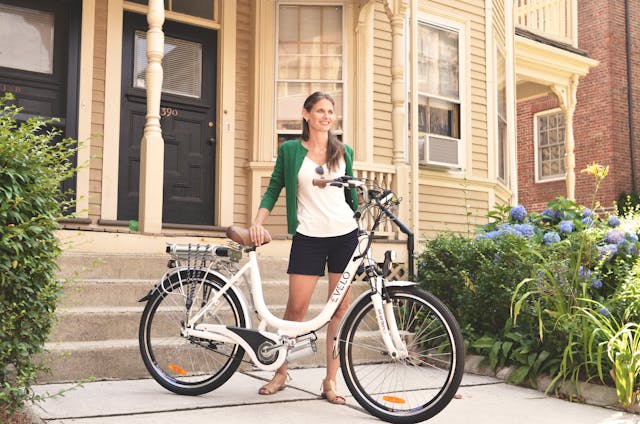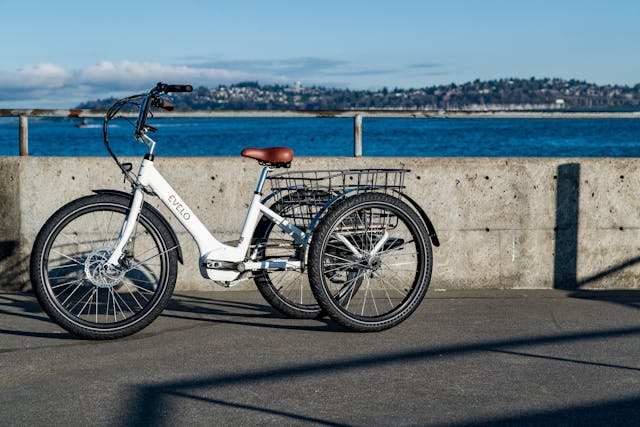Can We Charge Electric Bike At Home
Electric bikes, or e-bikes, have been gaining popularity for their convenience and eco-friendly nature. But have you ever wondered how these nifty vehicles get their power? Well, in this article, we’ll dive into the world of e-bike charging and explore the possibility of charging them right at home. So, grab your helmet and let’s ride into the wonderful world of e-bike charging!
Understanding Electric Bike Batteries:
You know how important batteries are for any electronic device, right? Well, e-bikes are no different. They rely on powerful batteries to get you zipping around town. There are two main types of e-bike batteries to consider: lithium-ion and lead-acid batteries. Li-ion batteries are lighter and offer longer ranges, while lead-acid batteries are more affordable but provide a shorter range.
Charging Electric Bike Batteries:
Now, let’s talk about charging these batteries. You have a couple of options here: charging your e-bike at home or using public charging stations. But today, we’ll focus on the advantages of charging at home. Not only is it incredibly convenient, but it’s also cost-effective in the long run.
Necessary Equipment for Home Charging:
Before you get started, it’s important to have the right equipment. You’ll need a charging cable and a suitable plug type for your e-bike. Safety first, my friend! Remember to follow the manufacturer’s guidelines and take necessary precautions while charging to avoid any mishaps.
Electric Bike Charging Infrastructure:
Let’s take a moment to explore the current state of electric bike charging infrastructure. While it’s not as vast as the charging network for electric cars, we’re seeing progress in this area. Infrastructure expansion is key to making e-bike charging more accessible and convenient for everyone. There are challenges to overcome, but with the growing popularity of e-bikes, the future looks bright.
RELATED – Extend the Life of Electric Bike Batteries
RELATED – Charge Electric Bike with a Power Bank
Understanding Electric Bike Chargers:
Now, let’s delve into the different types of chargers available for e-bikes. You have standard home chargers, fast chargers, and even portable chargers. Depending on your needs and budget, you can choose the one that suits you best. Different chargers offer varying speeds, so make sure to check the charging time required for your specific battery.
Installing a Home Charging Station:
If you’re a committed e-biker, you might want to consider installing a home charging station. Before doing so, there are a few things to keep in mind. Consider the power capacity of your home and research different charging station options to find the one that’s right for you. Installation can be done professionally or as a DIY project, but always ensure you’re following the proper regulations and safety measures.
Safety Guidelines for Charging at Home:
Safety should never be taken lightly, especially when it comes to electricity. Take a moment to understand electrical safety, such as overload and short-circuit protection. It’s also essential to use surge protectors for added safety measures. Fire safety is crucial too, so make sure to store your e-bike and charger in a well-ventilated area, away from any flammable materials.
Maximizing Battery Performance and Lifespan:
To get the most out of your e-bike battery, there are a few things you can do. Charging frequency and duration are important, so try not to let the battery completely drain before charging. Deep discharges can negatively impact the lifespan of your battery, so it’s best to avoid them. Additionally, pay attention to temperature considerations, keep your battery clean, and store it properly when not in use.
Can I Charge My Electric Bike at Home While Pedaling?
Yes, some electric bikes have the capability for pedal charging. This means that while you are pedaling, the bike’s battery is being charged. This can be a convenient way to extend the range of your electric bike without having to stop and plug it in for a recharge.
Is It Possible to Charge My Electric Bike at Home While I Travel?
If you’re wondering about taking your electric bike on a train and also charging it at home while traveling, the good news is that it’s possible. With a portable charging system, you can easily recharge your electric bike’s battery during your train journey and continue to charge it at home once you reach your destination. This allows you to enjoy the convenience of travel while ensuring your electric bike is powered up and ready to go whenever you need it.
Environmental Impact of Charging Electric Bikes at Home:
One of the major advantages of e-bikes is their positive impact on the environment. Compared to other modes of transportation, e-bikes reduce carbon emissions significantly. Charging your e-bike at home means you can further contribute to a greener future. Take a moment to evaluate the carbon footprint of your charging habits and feel good about your eco-friendly choice.
Future Trends in Electric Bike Charging:
The world of e-bikes is constantly evolving, and that includes charging technologies. Battery advancements, such as increased capacity and longer ranges, are on the horizon. Wireless charging options are also being explored, offering even more convenience. And hey, wouldn’t it be amazing if solar power could be integrated into e-bike charging? The future looks bright (no pun intended) for the world of e-bike charging!
Advancements in battery technology are on the horizon for e-bikes. Manufacturers are constantly working on improving battery capacity and longevity. Imagine being able to travel even farther on a single charge, or having a battery that lasts for years without degradation. These advancements will make e-bikes an even more attractive option for commuting and leisurely rides.
Another exciting development is the potential for wireless charging options. Just imagine parking your e-bike in your garage or at a designated charging spot, and without any cables, it automatically starts charging. This innovative technology is being explored and could eliminate the need for physical plugs altogether. Wireless charging would make charging your e-bike as easy as parking it and forgetting about it until it’s time to ride again.
Integration of solar power is another forward-thinking trend in e-bike charging. Harnessing the power of the sun to recharge e-bike batteries is a concept that could revolutionize the charging process. Solar-powered charging stations and even solar panels integrated into e-bike frames are being developed. Not only would this reduce reliance on the grid, but it would also provide an eco-friendly and sustainable way to charge e-bikes.
In addition to these technological advancements, we can expect even further expansion of the electric bike charging infrastructure. As e-bikes continue to gain popularity, the need for accessible charging points will increase. Cities and communities are realizing the benefits of supporting e-bike users and are investing in expanding the charging network. This means you’ll have more options for charging your e-bike while you’re out and about, further enhancing the convenience factor.
Now, I hope you’re as excited about the future of e-bike charging as I am. The advancements that lie ahead will make the experience even more convenient, eco-friendly, and enjoyable for e-bike enthusiasts like yourself. So, get ready to ride into the future with a fully charged battery and explore your surroundings with ease.
The convenience and popularity of electric bikes are only growing, and with that comes new and exciting developments in e-bike charging. As we continue to advance technologically, the future of e-bike charging holds endless possibilities. Let’s dive deeper and explore what we can expect in the coming years.
One area of focus for future e-bike charging is the development of smart charging systems. Imagine having a charging system that communicates directly with your e-bike battery, optimizing the charging process for maximum efficiency and longevity. Smart chargers could monitor battery health, adjust charging speed based on battery condition, and even provide real-time data on charging progress. This level of integration would not only make charging more efficient but also enhance the overall performance and lifespan of e-bike batteries.
Furthermore, advancements in battery technology could also lead to the development of swappable batteries. Just like swapping out a depleted battery for a charged one on your smartphone, e-bikes could have removable batteries that can be easily exchanged at dedicated stations. This would eliminate the need for lengthy charging times and provide a seamless experience for e-bike users. Swappable batteries could be a game-changer for those who rely heavily on their e-bikes for daily transportation or longer rides.
Additionally, the concept of bidirectional charging is gaining traction in the world of electric vehicles, including e-bikes. Bidirectional charging allows the battery to not only receive energy but also send it back to the grid when needed. This two-way flow of electricity can be beneficial during peak demand periods or as a backup power source during emergencies. With bidirectional charging, e-bikes could play a role in a larger energy ecosystem, contributing to a more sustainable and resilient power grid.
As we mentioned earlier, wireless charging is likely to become more prevalent in the future. There are already prototypes and pilot projects underway to explore this technology. Imagine having charging mats embedded in public spaces, parking lots, or even roads, where your e-bike charges automatically as you ride over them. This would eliminate the need to stop and physically plug in your e-bike, making charging effortless and seamless. Wireless charging could revolutionize e-bike charging and transform the way we think about recharging our vehicles.
In the pursuit of a greener and more sustainable future, many cities and governments are focusing on expanding their electric transportation infrastructure. This includes the development of dedicated e-bike charging stations and the integration of charging facilities into existing infrastructure, such as streetlights or public benches. These initiatives aim to encourage the adoption of e-bikes as a means of reducing carbon emissions and combating climate change. With more charging stations available, you’ll have peace of mind knowing that you can charge your e-bike wherever you go.
Kristina Grant is not just an enthusiast but a true authority on electric bikes. Nestled in the coastal beauty of Virginia, Kristina has found the perfect backdrop for her passion for electric biking. As a dedicated wife and homeschooling mom, her life revolves around family, faith, and the thrill of adventure.
Originally hailing from Ohio, Kristina's journey with electric bikes began as a curiosity and quickly evolved into a deep expertise. Her blog is a testament to her love for electric biking, combining her fascination for eco-friendly transportation with her coastal lifestyle.
When she's not cruising the beach on her electric bike, you'll find Kristina indulging in her other loves: long walks along the shore, getting lost in a good book, and cherishing moments with her loved ones. With a heart as big as her love for animals, especially cats, Kristina brings a unique perspective to the electric bike world, grounded in her strong faith in God and her dedication to a sustainable lifestyle.
Through her blog, Kristina shares her extensive knowledge of electric bikes, offering valuable insights, tips, and recommendations to fellow enthusiasts. Whether you're a seasoned rider or a newcomer to the electric bike scene, Kristina's blog is your go-to source for all things electric biking, fueled by her passion, expertise, and the scenic beauty of coastal Virginia.







